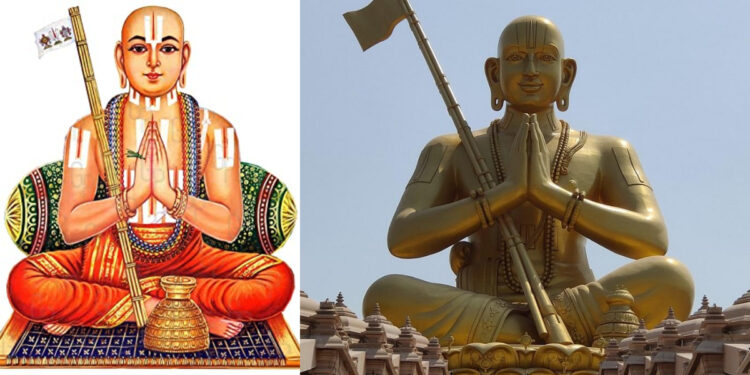Ramanuja was born into a privileged Brahmin family in about 1017 in Sriperumbudur, a village in southern India about 25 miles west of Madras.
His father was Keseva Samayaji, his mother, Kantimathi. Around 1033, Ramanuja married a girl named Rahshambal. His father died within a few days of the wedding, and this caused him considerable grief. Ramanuja gathered his young wife and his mother and left for Kanchipuram, where he settled.
Ramanuja’s cousin, Govina Bhatta, his closest friend and a man with whom he shared a mutual affection from early childhood soon joined them. Bhatta would play a pivotal role in Ramanuja’s future, delivering him from a plot to take his life. Ramanuja’s marriage lasted until he was thirty, when he gave up the worldly life for that of religion.
Ramanuja is considered the most influential thinker of devotional Hinduism. He spread devotion and discipline in society through his nine works known as Navaratnas. In his three major commentaries, the Vedartha-Samgraha, the Sribhasya and the Bhagavadgita-bhasya, he provided an intellectual basis for devotional worship. He gave new insight into southern Indian Vaishnavism and became known as its foremost saint.
Ramanuja formulated a Yoga that taught that the cultivation of bhakti is more important than mediation. Bhakti-Yoga is a form of supreme attachment to one divine person. Ramanuja believed and taught his disciples that devotion was not merely the means to liberation but the goal of all spiritual endeavors.
The prayer he repeated at the beginning of his Sri-Bhasya best describes the essence of his teachings-“May knowledge transformed into intense love directed to Sri Narayana (Vishnu), the highest Brahman, become mine, the Being to whom the creation, preservation and dissolution of the Universe is mere play, whose main resolve is to offer protection to all those who approach Him in all humility and sincerity, and Who shines out like the beacon light out of the pages of the Scripture (vedas).”


















Discussion about this post